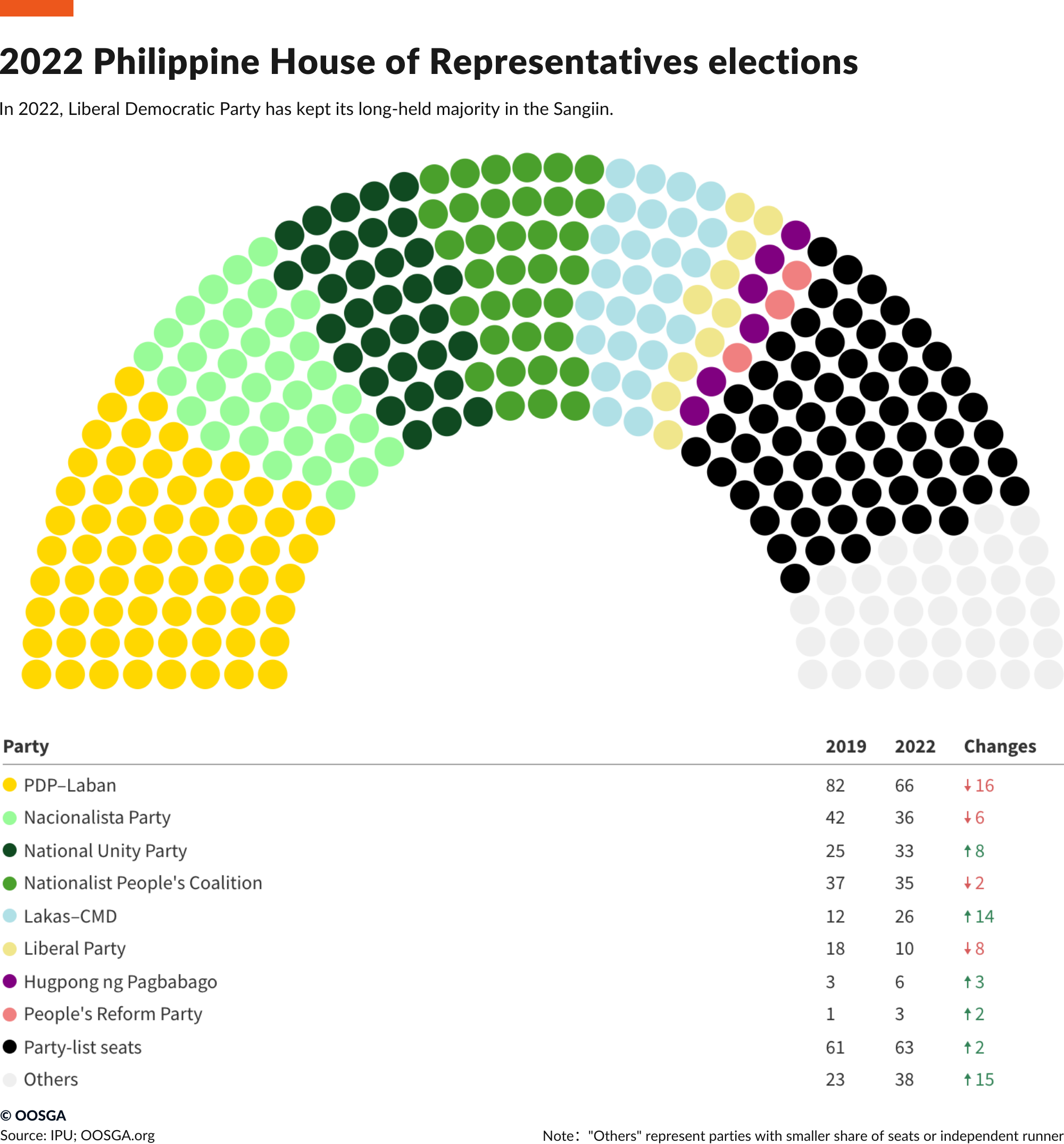Connect With Authors
*Your message will be sent straight to the team/individual responsible for the article.
The Philippines was governed by Spain from 1565 to 1898, after which it was taken over by the United States. The country became independent in 1946. Ferdinand Marcos ruled the Philippines for 21 years (1965-1986) with a period marked by economic mismanagement and martial law. After Marcos’ rule, a democratic system was established with Corazon Aquino (1986-1992) as the president and was continued by Fidel Ramos (1992-1998) and Joseph Estrada (1998-2001). Estrada was removed in a military-backed civilian coup in 2001 and was replaced by his vice-president, Gloria Macapagal Arroyo, who won the presidential election in 2004. Benigno Aquino, the son of Corazon Aquino, won the 2010 presidential election and completed his full term before stepping down in June 2016. He was succeeded by Rodrigo Duterte, a populist and former mayor of Davao City. The 17th presidential election was held in May 2022, and Ferdinand “Bongbong” Marcos Jr (the son of Ferdinand Marcos) was inaugurated as president in June 2022.
The Philippines has a presidential system of government with the president having a single 6-year term. The legislative branch, Congress, is based on the US model and has two elected bodies: the Senate (24 members) and the House of Representatives (311 members). Currently, the focus of the government is on the economic effects of the war in Ukraine, and job creation remains a key policy challenge due to the pandemic and increasing cost of living. Despite a shift in industrial policy that has not yet been realized, infrastructure upgrades, such as those in the “Build, Build, Build” program, will continue to be a priority under the Marcos administration.
President Marcos is likely to maintain the pro-market policy approach of his predecessor, Mr. Duterte. This will involve initiatives to improve the business environment, increase competitiveness, and liberalize investment regulations. Both conservative and liberal politicians support a business-friendly agenda, which will result in the gradual reduction of corporate tax from 30% to 20% by 2029. Despite these efforts, corruption and inefficiency will continue to be challenges in implementing major reforms. The poor state of infrastructure is a significant barrier to business in the Philippines, and the “Build, Build, Build” program will continue under President Marcos, albeit with a focus on fiscal discipline. The government is likely to seek funding from the private sector for infrastructure projects, which could lead to delays. Future projects may shift towards digitization and renewable energy.
-18.12 Billion
- %
-5.5 %
57.5 %
The recent presidential and congressional elections in May 2022 marked the end of a six-year electoral cycle that started in 2016, with Marcos coming out as the big winner. He not only won the presidential election by a large margin, the largest in recent history, but also his allies gained control over both chambers of Congress, making it easy for him to push forward with his policies, just as his predecessor did.
The next major nationwide elections will be held in 2025, in the middle of Marcos’s term, where half of the Senate and all members of the House of Representatives will be elected. These mid-term elections are often seen as a way to judge the performance of the president and also influence the strategies of political dynasties in preparation for the upcoming presidential election. As of now, the strong alliance between Marcos and Duterte appears poised to retain their majorities in Congress in 2025. There are two main risks for Marcos: the potential for his administration to be implicated in a corruption scandal, and the impact of an expected economic slowdown in 2023, caused by high inflation, declining growth, and interest-rate increases from major economies in 2022.

-
42
-
54
1.36 $
2.12 $
202 $
-1.0458 %